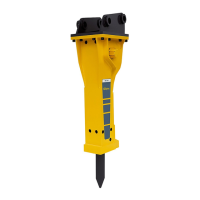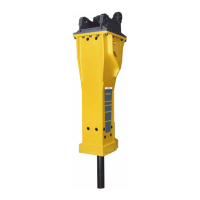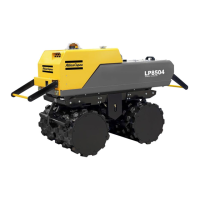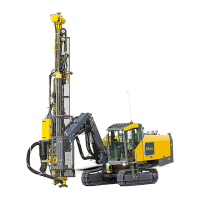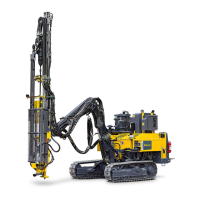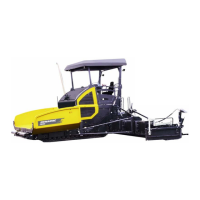Functional test
Always carry out a functional test before putting
the hydraulic attachment into use to check that all
hydraulic lines and connections are tight and that
the hydraulic attachment works without any
problems.
◆
Prepare the hydraulic attachment so that you
can start using it.
◆
Carry out a couple of test impacts on the
material to be broken.
◆
Check the hydraulic lines and make sure that
the hydraulic attachment works without any
problems.
◆
Immediately switch off the hydraulic attachment
if oil escapes from the hydraulic lines or if other
defects in functioning occur.
◆
Depressurise the hydraulic system (see chapter
Depressurising the hydraulic system).
◆
Only use the hydraulic attachment again after
having repaired all leaks and operating defects.
Correct operation
Working angle
◆
Always position the tool so that it hits the
material to be broken at a right angle.
If you do not do this, the hydraulic breaker will
wear faster and damage will occur after a while.
◆
Slightly swing the hydraulic breaker to and fro
when carrying out the hammer impacts, but
never swing it through more than approx. 5°.
This swing action enables any dust under the
tip or the cutter of the working tool to escape.
Otherwise a layer of dust is created which
would prevent the full percussion energy being
transferred to the material to be broken. The tip
of the working tool then becomes hot and loses
its hardness.
Larger swing angles would lead to bending
loads and damage to the working tool and the
hydraulic breaker.
Safety and operating instructions HB 2000, 2000 DP, 2500, 2500 DP
34 © Construction Tools GmbH | 3390 5090 01 | 2016-05-23
Original instructions
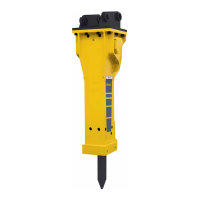
